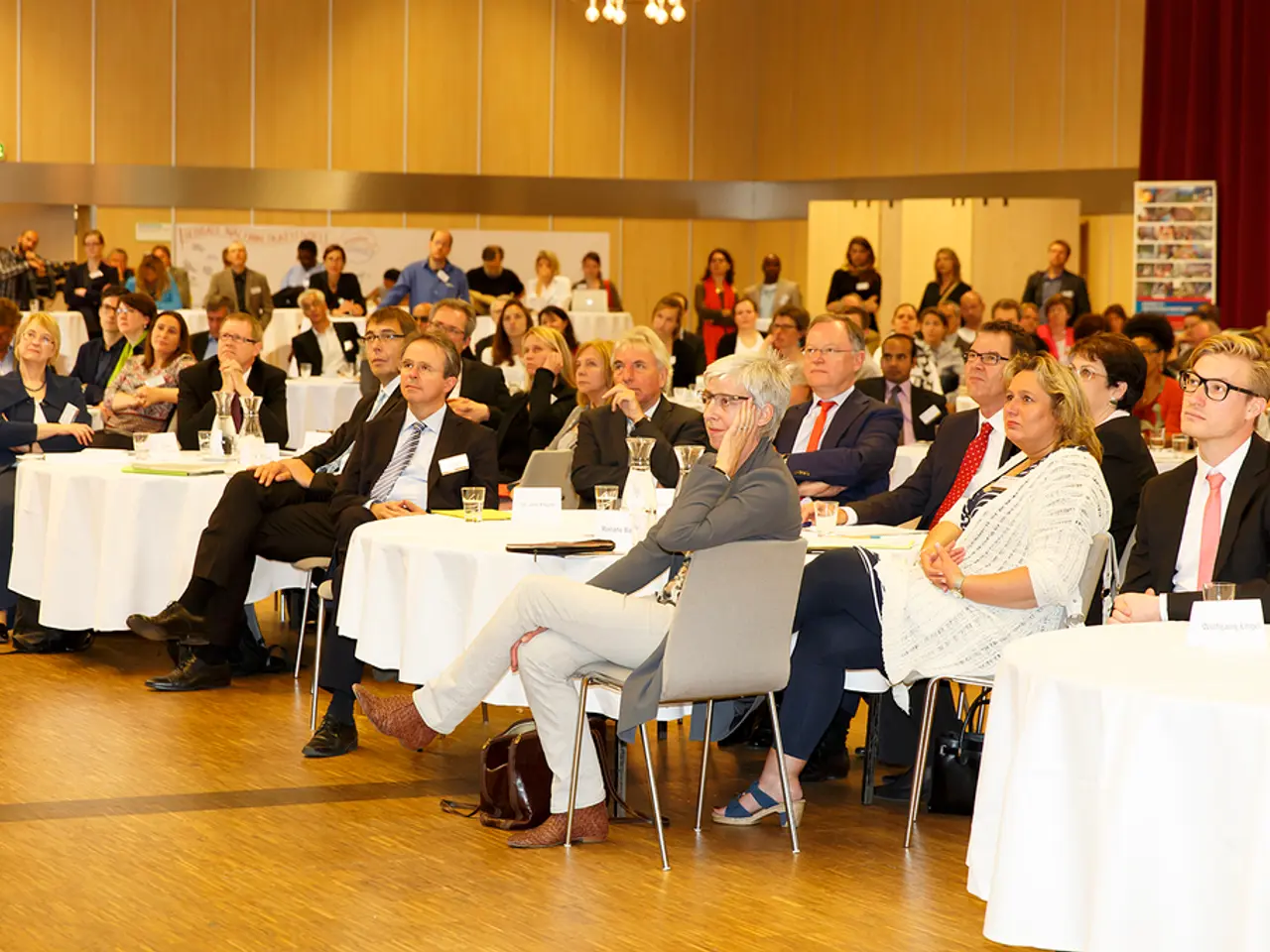Leadership Training Essentials: Breaking Down the Necessary Components
In today's dynamic business landscape, effective leadership is more important than ever. To equip leaders with the skills they need to thrive, a strategic, integrated, and learner-centered approach to leadership training is crucial. Here's a step-by-step framework for an impactful leadership training program, focusing on communication, emotional intelligence, strategic vision, inclusive leadership, experiential learning, measuring impact, and building a culture of continuous learning.
- Assess and Tailor Development Plans Begin by assessing the current leadership competencies and needs of participants to create individualized development plans. Use performance reviews, 360-degree feedback, and self-assessments as input.
- Design a Curriculum Aligned with Organizational Strategy Develop a curriculum that balances theory and practical skills, aligned with your company's strategic goals. Include workshops on communication and emotional intelligence, strategic vision sessions, and inclusive leadership practices.
- Incorporate Experiential Learning Opportunities Use the 70-20-10 learning model: 70% on-the-job experiences, 20% mentoring and coaching relationships, and 10% formal training and workshops. Experiential challenges allow leaders to practice and embody concepts in authentic settings.
- Embed Mentorship and Peer Learning Pair participants with experienced mentors and foster peer learning cohorts to encourage collaboration and diverse perspectives.
- Use Technology and Learning Systems to Support Continuity Leverage learning management systems, collaboration tools, and knowledge-sharing platforms to sustain learning beyond formal sessions.
- Measure Impact through Qualitative and Quantitative Metrics Set clear objectives linked to business outcomes, such as improved team communication and leadership effectiveness. Measure impact by pre- and post-program assessments of leadership competencies, KPIs like retention and promotion rates, and participant feedback on behavioral changes.
- Embed Leadership Development into Organizational Culture Treat leadership development as a core, ongoing business process integrated with strategic planning, performance management, and succession planning.
- Foster a Culture of Continuous Learning Encourage continuous personal and professional growth by establishing communities of practice, internal leadership academies, and ongoing mentoring structures.
By following this integrated approach, leaders develop the targeted skills effectively while reinforcing leadership as a sustained, strategic priority within the organization.
Summary Table: Key Focus Areas and Implementation Approaches
| Focus Area | Implementation Approaches | |-------------------------|--------------------------------------------------------------------| | Communication | Workshops, on-the-job challenges, mentorship | | Emotional Intelligence | Targeted training, coaching, experiential reflection | | Strategic Vision | Scenario planning, strategic projects, curriculum alignment | | Inclusive Leadership | Diversity-focused training, peer cohorts, inclusive coaching | | Experiential Learning | 70-20-10 model, cross-functional teams, real-world assignments | | Measuring Impact | Pre/post assessments, KPIs (retention, promotions), feedback loops | | Continuous Learning | Learning platforms, leadership academies, recognition systems |
Using this strategy combines best practices outlined in recent leadership development literature, ensuring comprehensive and effective program implementation.
- To complement the training program, engage finance professionals to assess the return on investment (ROI) of the leadership development efforts, ensuring that business strategy and finance goals are aligned.
- In the realm of education-and-self-development, encourage leaders to read books and articles related to leadership, fostering their growth beyond the formal training program.




